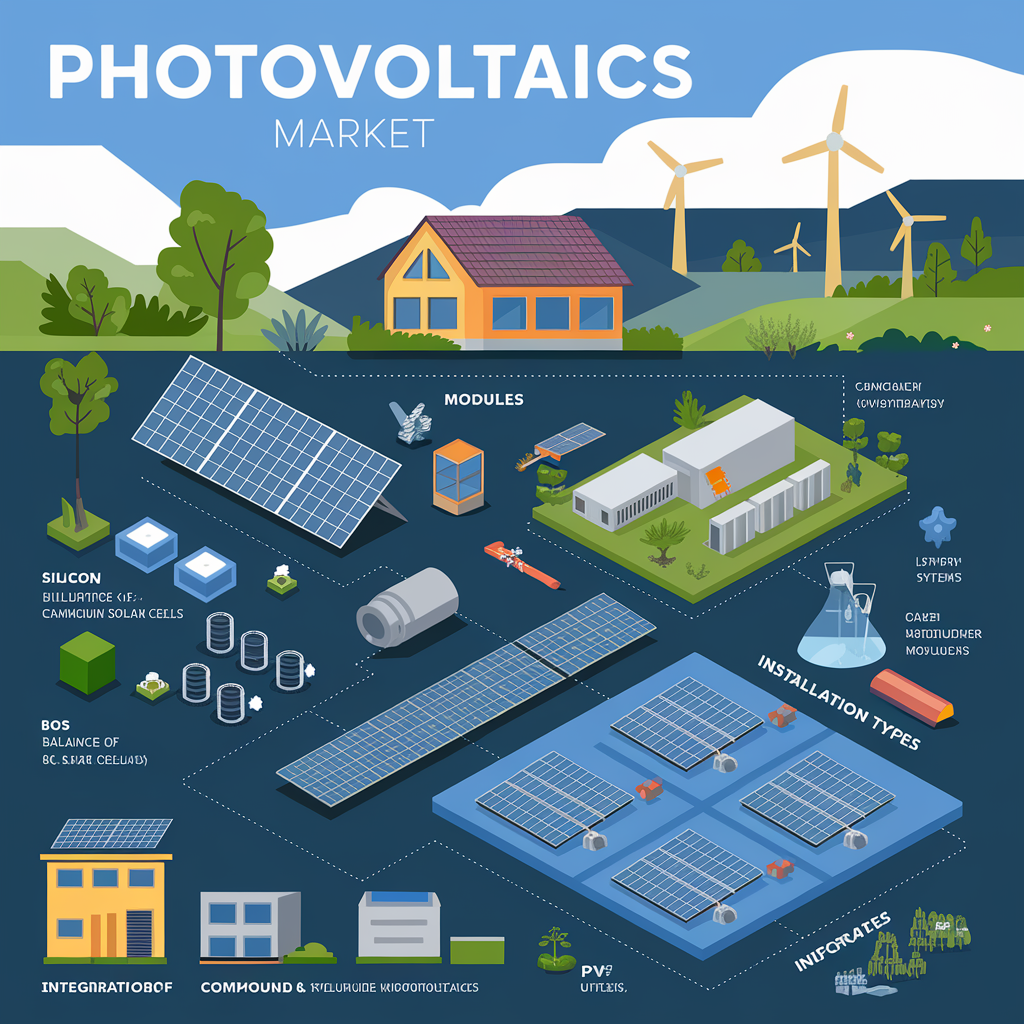The construction industry is undergoing a transformative shift toward sustainability, driven by increasing environmental awareness, regulatory pressures, and technological advancements. Among the many innovations steering this change, Building Integrated Photovoltaics (BIPV) stands out as a game-changer. By seamlessly combining solar energy generation with architectural design, BIPV is making significant waves in both the photovoltaics (PV) market and sustainable construction.
The Role of Sustainability in Modern Construction
Sustainability is no longer a choice but a necessity in construction. With buildings accounting for nearly 40% of global energy-related carbon emissions, there is a pressing need for energy-efficient and eco-friendly solutions. Governments, developers, and architects are embracing green building standards such as LEED (Leadership in Energy and Environmental Design) and BREEAM (Building Research Establishment Environmental Assessment Method), which emphasize energy efficiency, resource conservation, and renewable energy integration.
This is where BIPV plays a pivotal role. Unlike conventional solar panels, BIPV systems are integrated directly into building materials such as roofs, facades, and windows. This dual-purpose functionality not only enhances the aesthetic appeal of buildings but also contributes significantly to their energy efficiency, aligning perfectly with sustainability goals.
Download PDF Brochure @ https://www.marketsandmarkets.com/pdfdownloadNew.asp?id=428

Impact of BIPV on the PV Market
The integration of photovoltaics into building structures is reshaping the PV market by expanding its application beyond conventional solar farms and rooftop installations. BIPV is driving growth and innovation in several key ways:
- Market Expansion:
BIPV is unlocking new opportunities for solar energy adoption in urban environments. By utilizing vertical surfaces such as facades and windows, BIPV systems make solar energy viable in densely populated areas where space for traditional solar installations is limited. - Cost Optimization:
By replacing conventional building materials with energy-generating alternatives, BIPV reduces the overall cost of construction. Over time, the energy savings generated by these systems further enhance their cost-effectiveness, making them an attractive option for developers and property owners. - Technology Advancements:
Innovations in BIPV technology, such as transparent solar cells, flexible panels, and advanced thin-film materials, are driving the evolution of the PV market. These advancements allow for greater design flexibility and improved energy efficiency. - Increased Demand for Aesthetic Solar Solutions:
Traditional solar panels often face resistance due to their bulky appearance. BIPV addresses this concern by offering visually appealing solutions that blend seamlessly with building designs, attracting a broader customer base and boosting PV market growth.
Benefits of BIPV in Sustainable Construction
The adoption of BIPV systems in sustainable construction brings a host of environmental, economic, and social benefits:
- Energy Efficiency:
BIPV systems convert sunlight into electricity, reducing reliance on fossil fuels and lowering energy costs. Their integration into buildings helps create net-zero energy structures, a key goal in sustainable construction. - Reduced Carbon Footprint:
By generating clean energy onsite, BIPV systems contribute to significant reductions in greenhouse gas emissions, helping combat climate change. - Enhanced Durability and Functionality:
BIPV materials are designed to perform as both energy generators and structural components, offering durability and multifunctionality that traditional materials lack. - Improved Urban Energy Resilience:
BIPV systems enable decentralized energy production, reducing grid dependency and enhancing energy security in urban areas.
Challenges and Solutions
Despite its benefits, the widespread adoption of BIPV faces challenges:
- High Initial Costs:
While BIPV systems can reduce long-term operational costs, their upfront investment remains a barrier. However, government incentives, subsidies, and innovative financing models are making these systems more accessible. - Awareness and Expertise:
Many architects and developers lack awareness of BIPV’s potential or the technical expertise to implement it. Collaborative initiatives between industry stakeholders and training programs can address this gap. - Standardization Issues:
The lack of standardized testing and certification processes for BIPV products can hinder their adoption. Developing industry-wide standards will help build confidence in these systems.
Future Prospects of BIPV in the PV Market
The global BIPV market is poised for significant growth in the coming years. According to industry forecasts, increasing demand for green buildings, technological advancements, and supportive policies will drive the expansion of this segment. Regions like Europe, North America, and Asia-Pacific are expected to lead the way, with large-scale urban projects and smart city initiatives serving as catalysts.
Building Integrated Photovoltaics represents a powerful fusion of sustainability and innovation, making it a cornerstone of modern construction and a driver of growth in the PV market. By enabling buildings to generate clean energy while maintaining their aesthetic and functional integrity, BIPV systems are revolutionizing how we approach energy and architecture. As the world continues to prioritize sustainable development, BIPV will play a critical role in shaping a greener and more resilient future.
